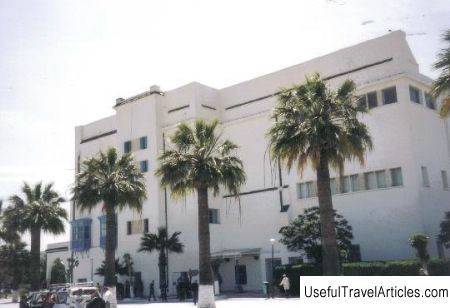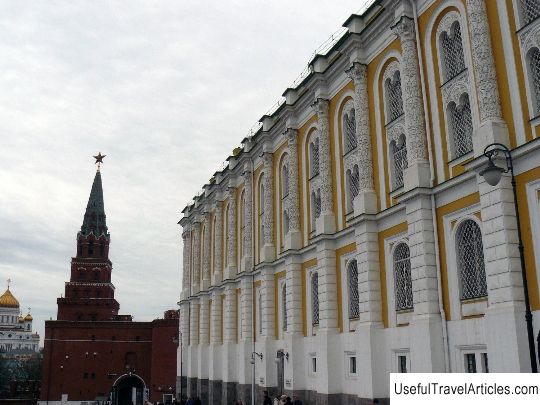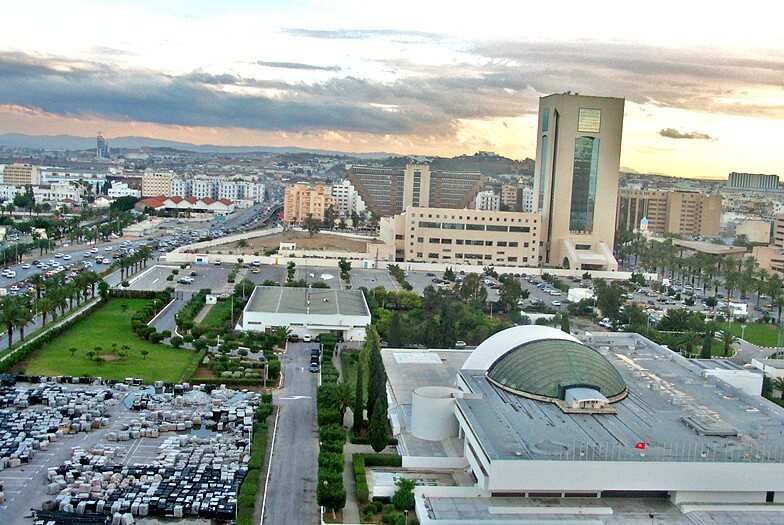Bardo Museum description and photos - Tunisia: Tunis

Bardo Museum description and photos - Tunis: Tunisia. Detailed information about the attraction. Description, photographs and a map showing the nearest significant objects. The title in English is Bardo Museum. Photo and descriptionThe Bardo Museum is one of the most famous museums in the Mediterranean and the second largest in Africa. He can tell about the whole history of Tunisia, and this is no less than several millennia. The original name of the museum is Alaun (in honor of one of the rulers of Tunisia), but later, after the state gained independence, the museum was renamed Bardo - by the name of the bey's palace, in which it has been located since 1888. Since the museum's collections are constantly replenished, and the number of its visitors is increasing every year, the building is often renovated - new premises are added, the collections are redistributed. The museum consists of several sections, each of which is dedicated to its own period. Bardo houses one of the finest and one of the largest collections of mosaics from the Roman period. Some plots of mosaics have no analogues in the whole world and therefore are considered unique - for example, "Speech of Virgil". The halls dedicated to this period also contain many marble statues of Greek and Roman gods and goddesses, Roman emperors. All these findings were discovered during excavations in Carthage in the early twentieth century. The pavilions of the museum also display a collection of terracotta statues discovered during excavations of the Libyan-Punic part of Carthage, and masks used by the actors of the ancient theater. The next section of the museum - the Islamic Hall - houses the world famous Blue Koran, as well as a collection of ceramics from Asia Minor of the 9th century. Some plots of mosaics have no analogues in the whole world and therefore are considered unique - for example, "Speech of Virgil". The halls dedicated to this period also contain many marble statues of Greek and Roman gods and goddesses, Roman emperors. All these findings were discovered during excavations in Carthage in the early twentieth century. The pavilions of the museum also display a collection of terracotta statues discovered during excavations of the Libyan-Punic part of Carthage, and masks used by the actors of the ancient theater. The next section of the museum - the Islamic Hall - houses the world famous Blue Koran, as well as a collection of ceramics from Asia Minor of the 9th century. Some plots of mosaics have no analogues in the whole world and therefore are considered unique - for example, "Speech of Virgil". The halls dedicated to this period also contain many marble statues of Greek and Roman gods and goddesses, Roman emperors. All these findings were discovered during excavations in Carthage in the early twentieth century. The pavilions of the museum also display a collection of terracotta statues discovered during excavations of the Libyan-Punic part of Carthage, and masks used by the actors of the ancient theater. The next section of the museum - the Islamic Hall - houses the world famous Blue Koran, as well as a collection of ceramics from Asia Minor of the 9th century. All these findings were discovered during excavations in Carthage at the beginning of the twentieth century. The pavilions of the museum also display a collection of terracotta statues discovered during excavations of the Libyan-Punic part of Carthage, and masks used by the actors of the ancient theater. The next section of the museum - the Islamic Hall - houses the world famous Blue Koran, as well as a collection of ceramics from Asia Minor of the 9th century. All these findings were discovered during excavations in Carthage in the early twentieth century. The pavilions of the museum also display a collection of terracotta statues discovered during excavations of the Libyan-Punic part of Carthage, and masks used by the actors of the ancient theater. The next section of the museum - the Islamic Hall - houses the world famous Blue Koran, as well as a collection of ceramics from Asia Minor of the 9th century.      We also recommend reading Crystal Factory description and photo - Russia - Golden Ring: Gus-Khrustalny Topic: Bardo Museum description and photos - Tunisia: Tunis. |




